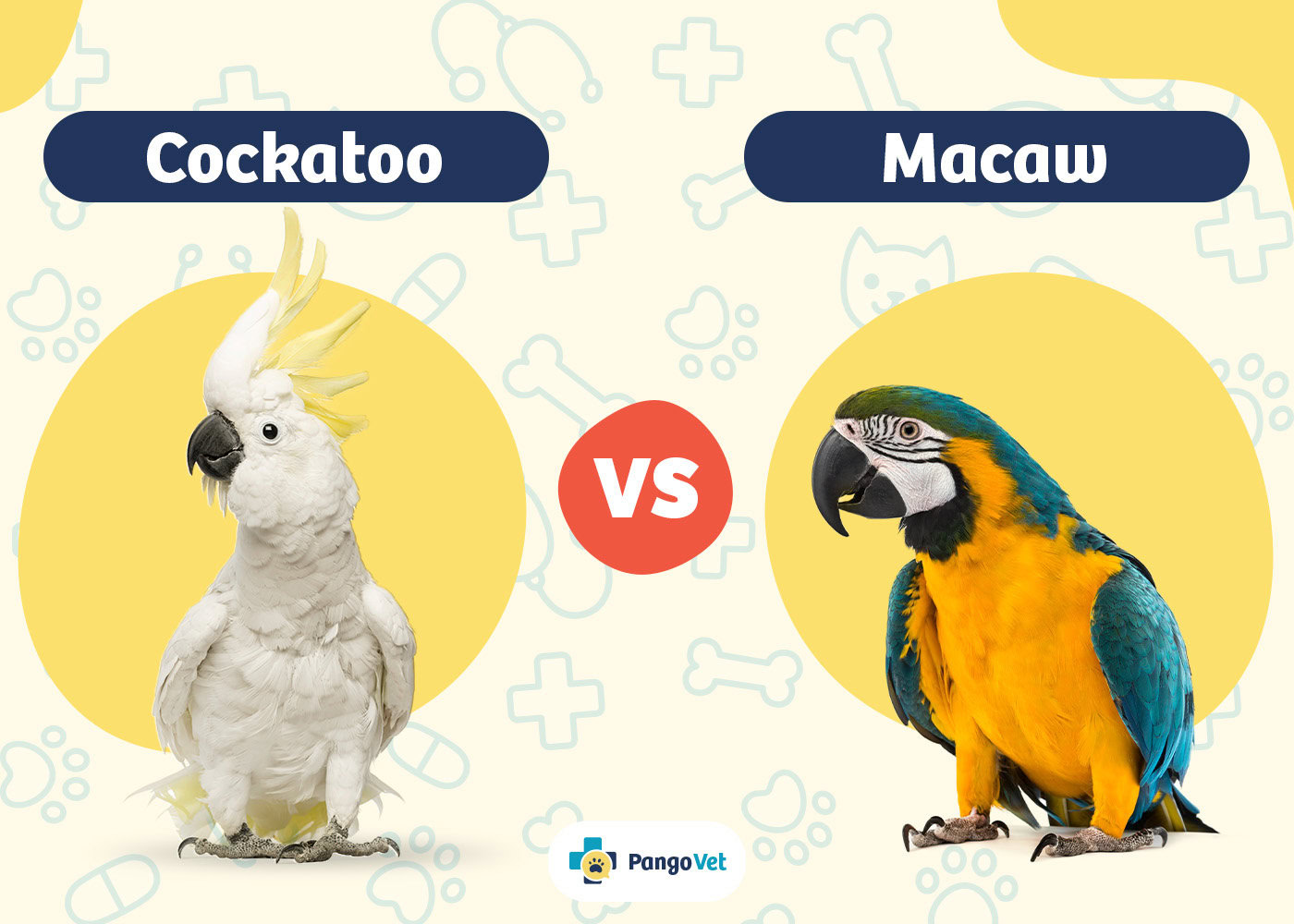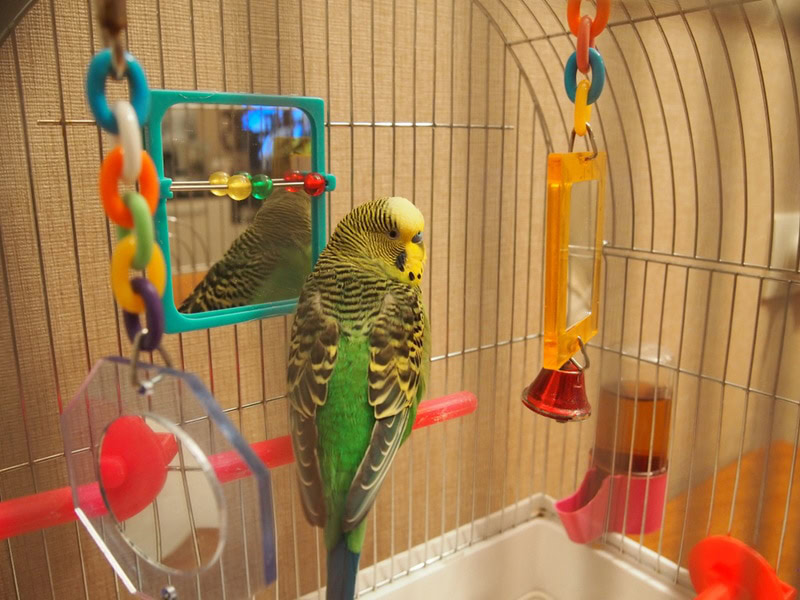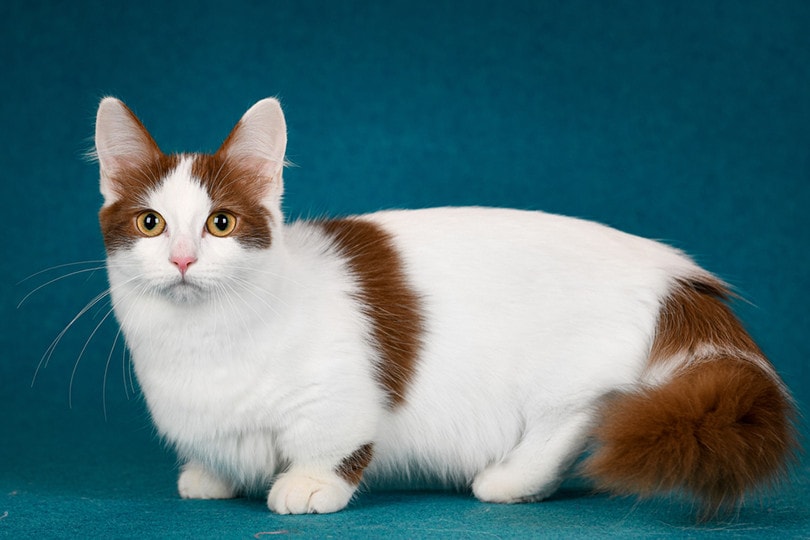Click to Skip Ahead
Macaws and cockatoos are large parrots that are commonly owned as pets. Their bright colors, intelligence, and long lifespans make them a preferred pet for many.
However, if you can only have one of these birds, which one do you choose? There are several differences between the two to distinguish them, and some bird owners prefer one over the other.
If you are trying to decide between the two, read on to discover their similarities and defining differences.

Visual Differences
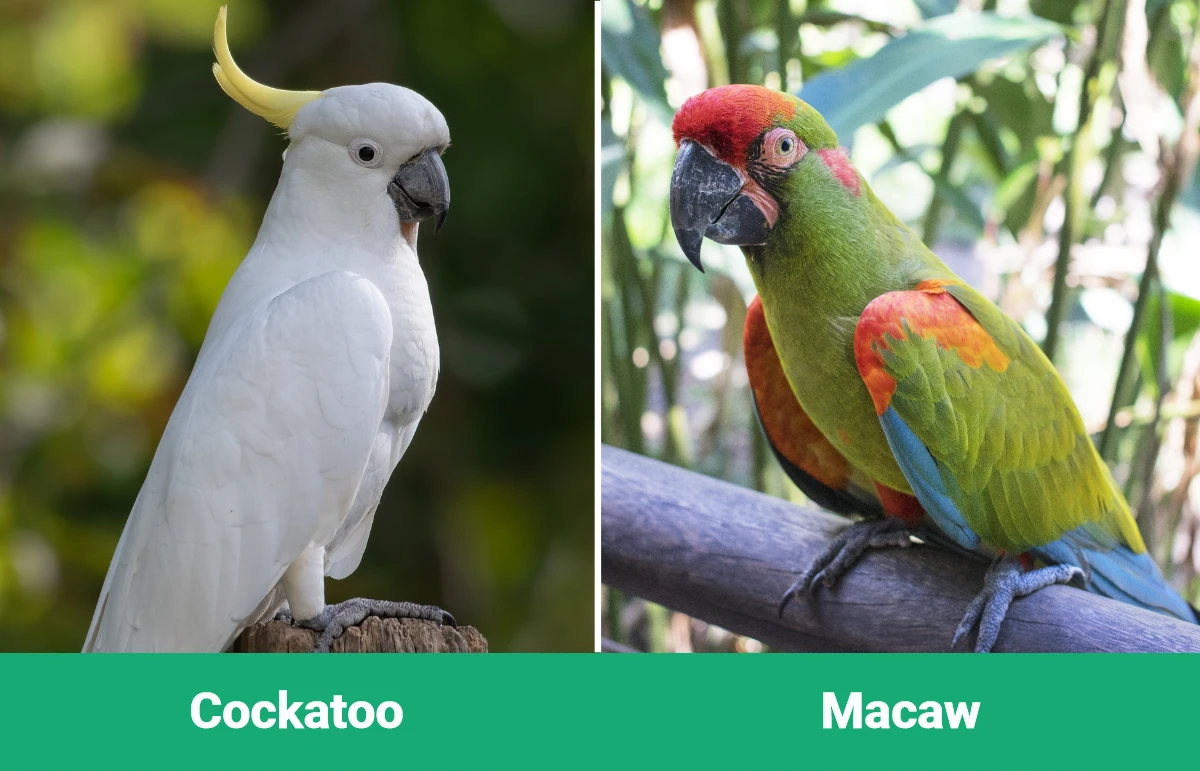
At a Glance
- Average height (adult): 12–28 inches
- Average weight (adult): 220–880 grams, depending on the breed
- Lifespan: 30–45 years
- Exercise: 15–20 minutes each day
- Grooming needs: Low
- Family-friendly: Yes
- Other pet-friendly: Sometimes
- Trainability: Less apt to speak and more challenging to teach tricks
- Average height (adult): 12–40 inches
- Average weight (adult): 900–1,100 grams, depending on the breed
- Lifespan: 50–80 years
- Exercise: 10–20 minutes a day
- Grooming needs: Low
- Family-friendly: Relatively
- Other pet-friendly: Sometimes
- Trainability: Easy to train, talkative and intelligent

Cockatoo Overview
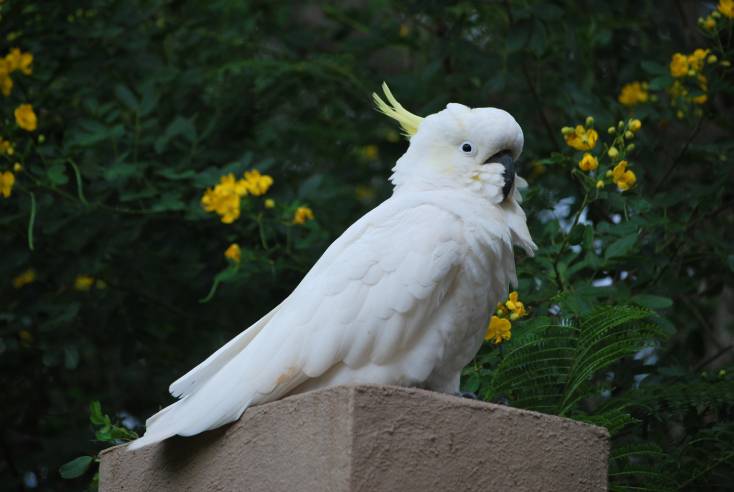
Cockatoos obsessively love their humans. They need heaps of attention, much more than almost any other species commonly kept as pets. They are cuddly and loving and can quickly suffer from depression or anxiety if they are not around people.
Cockatoos are well-known for their distinctive plumage. They are medium-sized birds with a stark white body. Their crest on the top of their heads is frequently a warm shade of yellow or orange. Their beak and feet are slate gray, with light blue circles around their eyes.
Personality / Character
Cockatoos are sometimes called “Velcro” birds because they want to stay near their humans. They are known for having borderline obsessive behavior when it comes to being around their favorite people. Cockatoos form bonds with the members of their family quickly. It is this behavior that has defined them as being loving but highly demanding birds.
Cockatoos are not only known for being emotional when it comes to their caretakers, but they are also quite intelligent. Still, most people who own a cockatoo would attest that it is akin to living perpetually with a 2-year-old. They can have temper tantrums if left alone or bored for too long.
Speech and Sound
If you adopt a cockatoo, be prepared to deal with a loud bird. They vocalize whenever they want attention and are even louder during their favorite times of the day, which are typically sunrise and sunset.
Cockatoos can learn how to speak; they are not as proficient as other species, but they can learn a few small phrases and words.
Training
When training your cockatoo, the most important aspect is consistency. The time of day that you decide to take them out and do a training session should be consistent, as well as the commands that you give them and the place you train them. The more consistencies you have, the faster they will learn.
If you are trying to teach them how to say a specific word, you need to stick to the word or phrase until they say it and get comfortable with it. Once they say it, reward them immediately.
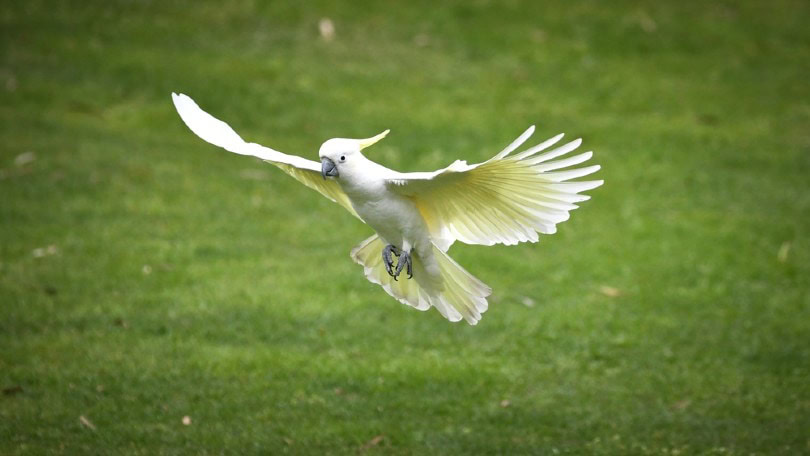
Health & Care
All cockatoos are prone to feather picking if they suffer from loneliness or boredom. They need to be mentally stimulated to stay healthy. Moluccan cockatoos are the most prone to exhibit this behavior with less provocation than other birds.
- Psittacine beak and feather disease
- Fatty liver disease
- Obesity
Most of the significant health conditions they suffer from can be circumvented if their diet stays healthy and balanced. They shouldn’t consistently have food that is high in fat. If they get treats, ensure that they get plenty of exercise. Cockatoos also do not live as long as macaws.
- You may also like: How to Take Care of a Baby Cockatoo
Breeding
Most cockatoos, particularly the more common breeds, breed well in captivity. To induce breeding, they must get comfortable in their surroundings and with their mate. They have to bond, and they need to be well-fed. Give them a spacious cage and ensure that it is immaculate. If you try to breed them in North America, the primary breeding season runs from the end of winter into the spring.
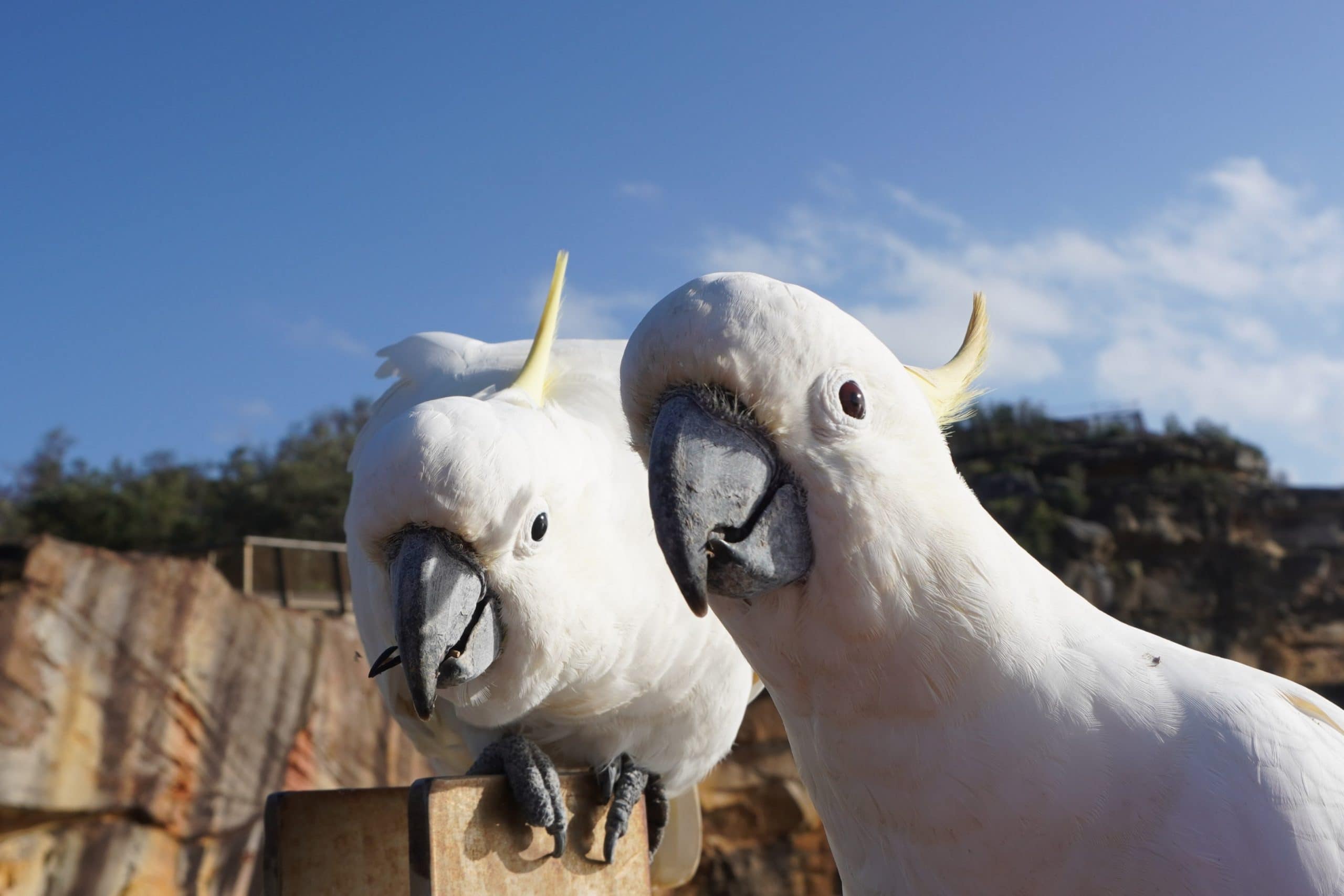
Suitability
Cockatoos are suitable pets for people with plenty of time to spend with their birds. They can make good family pets if children are taught how to handle them properly. Since they form close bonds with humans, they aren’t ideal for owners who spend most of their time away from home and travel frequently.
- Loving birds that bond quickly with humans
- Adapt well to a variety of surroundings
- More convenient to breed domestically than many other species
- Demands attention from the owner
- Loud
- Starts feather-picking when bored

Macaw Overview
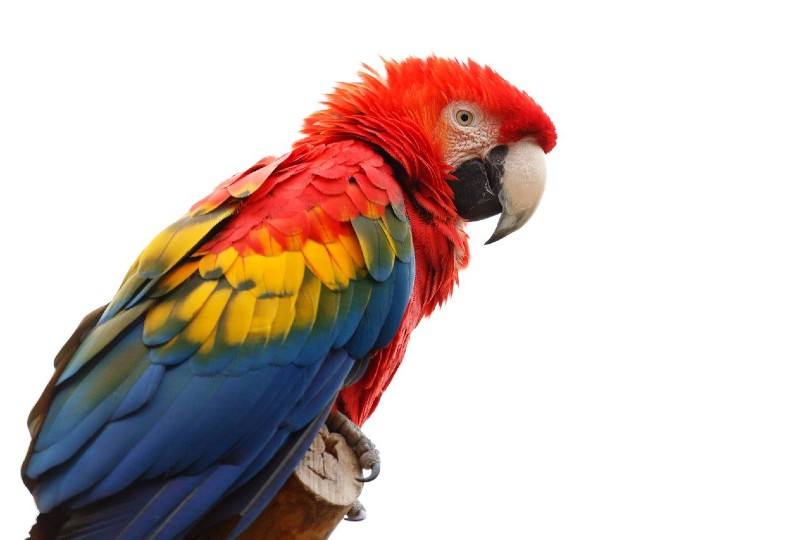
Macaws are perhaps some of the most well-known parrots. When someone talks about a parrot in generic terms, it is the macaw’s brightly colored red body with blue and green wings that comes to mind. They also happen to be some of the loudest birds in the jungle and one of the largest parrot species owned as pets. There are more than nine species of macaws, with several being on the endangered list for the wild population.
Personality / Character
Macaws are silly, playful, intelligent, and affectionate. They are considered the giants of the parrots and are highly social birds. The most popular breeds include the popular red-bodied macaw and the hyacinth macaw, which has a bright blue and yellow body. Macaws are not only the largest domesticated parrots, but they also have prominent personalities. They are raucous and love to mimic all kinds of noises. They also love challenges and games. With their large, strong beak, they can quickly tear toys to shreds to see what’s inside.
Speech and Sound
Macaws are known for screaming if they are unhappy or feel ignored. They make several sounds, such as squawking and screeching, sometimes just to hear their voice. Their loud chatter makes them an inappropriate pet for an apartment.
Macaws are intelligent enough to be trained to repeat words, and some have impressive vocabularies. They naturally like to mimic whistling sounds, music, or other noises they hear around the home.
Training
Macaws love learning new tricks and are always ready to take on a new challenge. When training them, use positive reinforcement. Try to be consistent and avoid taking a day off so the new lessons will always be fresh in your bird’s mind.
It is better to have multiple short lessons than one long one. When they do something right, immediately reward them with their favorite treat. Maintain eye contact to keep their attention.
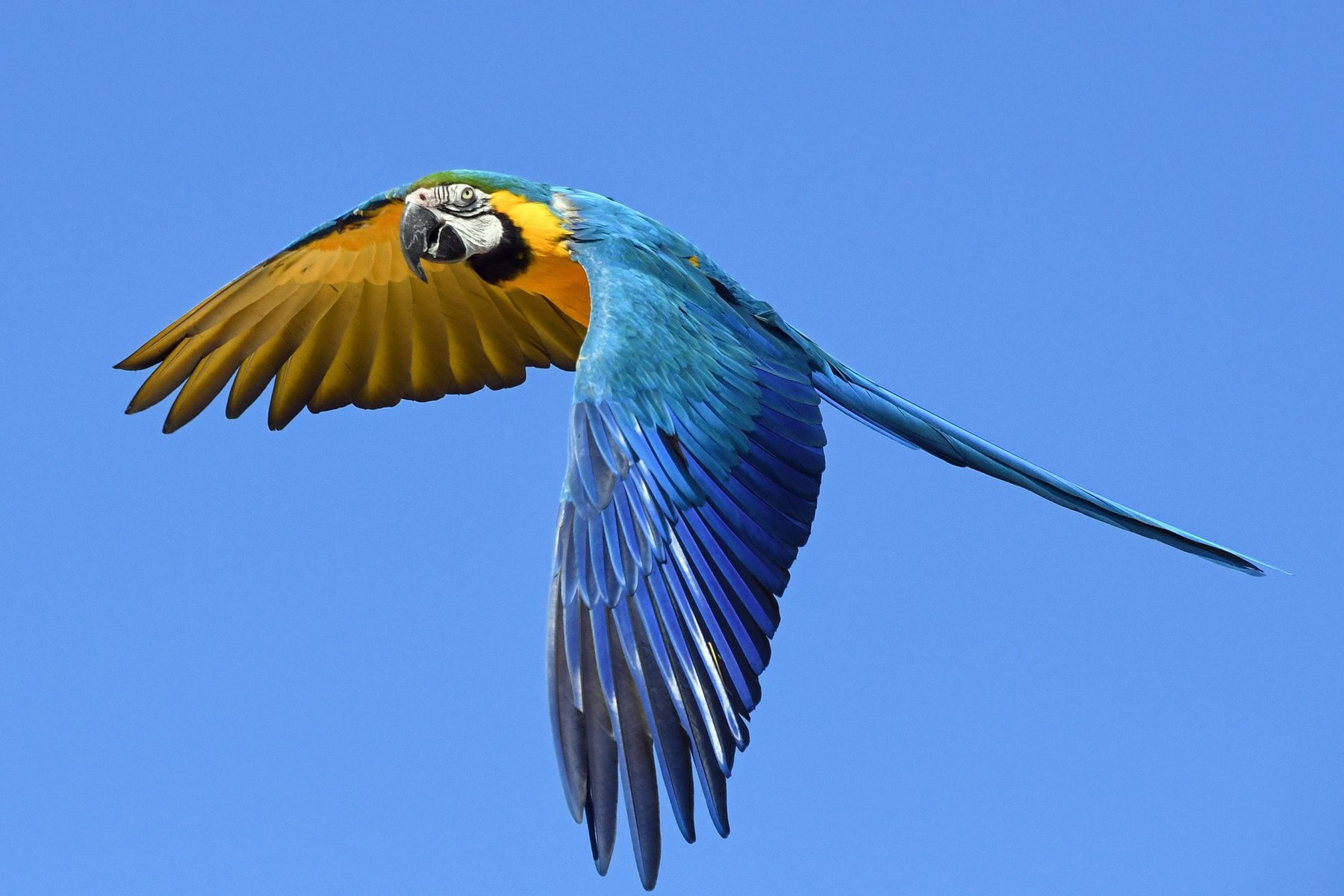
Health & Care
Macaws, like many other parrots, are known for feather-picking behavior when bored or lonely.
Breeding
Blue and gold macaws are easier species to breed domestically. They are much more willing to mate in different locations and conditions. Other macaws can be bred domestically, but they take much more time and management before breeding.
Suitability
Macaws are best for people who live in homes without close neighbors. You need plenty of time to train them, and your household needs to be okay with constant loud noises. However, they make remarkable pets when they’re properly cared for and loved. They have long lifespans and never cease to amuse their favorite humans.
- Intelligent and trains relatively quickly
- Some species are straightforward to breed domestically compared to other birds
- Not as demanding or obsessive as the cockatoo
- Extremely loud birds
- Can exhibit pretend aggressive behaviors

Summary
The best bird for you between a cockatoo and a macaw primarily comes down to the amount of noise that you are okay with and the amount of time that you can spend with your bird. A cockatoo needs plenty of time with humans daily, or they will quickly exhibit harmful behaviors. A macaw isn’t as demanding but is much more vocal and markedly louder than a cockatoo.
Cockatoos make better pets for owners with nearby neighbors, but they have shorter lifespans. However, healthy cockatoos can live up to 45 years. Macaws can live up to 80 years, and both birds require a lifetime commitment of care.
Featured Image Credit: Top – ignartonosbg, Pixabay | Bottom – kayuli, Pixabay
